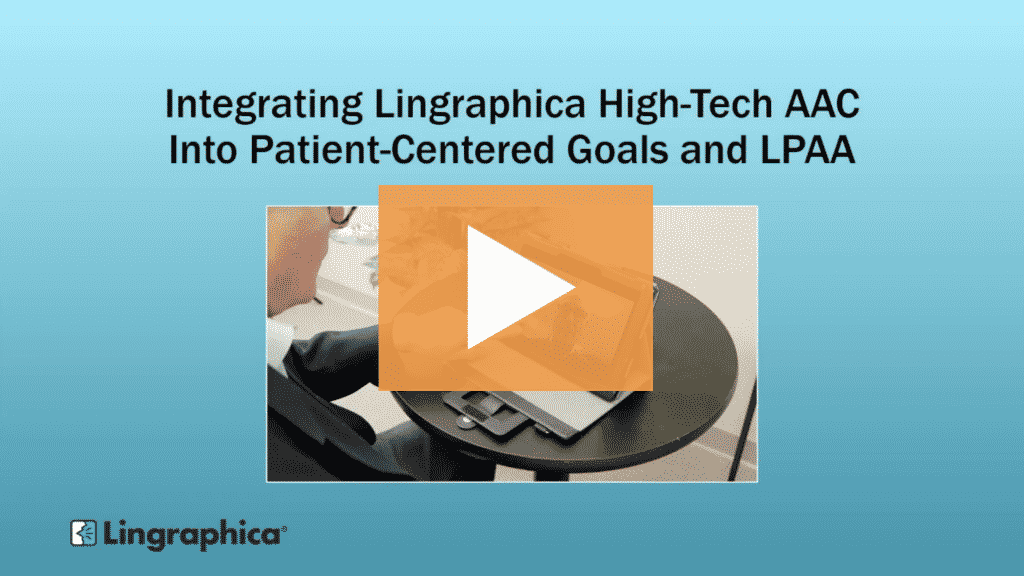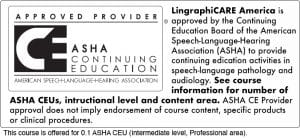 In our new course on integrating high-tech AAC devices into aphasia treatment, Speech Language Pathologists (SLPs) will learn about how to integrate high-tech AAC devices into patient-centered therapies. We’ll explore key aspects, including:
In our new course on integrating high-tech AAC devices into aphasia treatment, Speech Language Pathologists (SLPs) will learn about how to integrate high-tech AAC devices into patient-centered therapies. We’ll explore key aspects, including:
-
- engaging care partners in their loved one’s treatment
- Life Participation Approach to Aphasia (LPAA)
- four key features of a Lingraphica high-tech AAC device
Our course, “Integrating Lingraphica High-Tech AAC Into Patient-Centered Goals and LPAA,” will define the differences between low-tech AAC and high-tech AAC devices. We will also review four features of a Lingraphica high-tech AAC device that communication partners can use to improve their communication with PWAs. Finally, we will explore the therapeutic, orthotic, and prosthetic uses of a high-tech AAC device.
Including caregivers in the rehabilitation process is important. Our experience working with thousands of caregivers has shown that when the caregiver is involved in their loved one’s therapy sessions, that person tends to have better long-term success. It’s up to us to emphasize the critical role caregivers play in their loved one’s recovery. Lingraphica’s 2020 Aphasia Caregiver Report compiled data from hundreds of caregivers. It presented a broad picture of the various challenges caregivers face, and as a result gave us insight into the ways that we can better support their involvement in their loved one’s treatment.
Lingraphica’s high-tech AAC devices are backed by over 30 years of research. They are designed specifically for people with aphasia, and are fully customizable and designed to promote independence and participation. Our chief scientists have found that the combination of touching an icon, reading the written word, hearing it spoken, and seeing an image of it improves users’ communication skills. This is referred to as Multi-Modality Stimulation.
In this course we will also review the core values of the Life Participation Approach to Aphasia (LPAA), which encourages SLPs to place the client’s goals at the center of all decision making and goal development. We begin with the broad focus of the activity the client most wants to do, and then scaffold the steps that will allow them to meet that goal. LPAA also involves the inclusion of clients’ friends, family, and loved ones. We will show how to integrate LPAA into treatment and therapy using an AAC device. We will also explore the benefits of this approach to the client, caregiver, and SLP.
 Finally, this course will explore the device trial process, including an eligibility check and eventual authorization. During this time, SLPs work closely with our clinicians, documentation specialists, and reimbursement team. We will explore each step of the trial and funding process, and outline the support Lingraphica offers to the SLPs we work with.
Finally, this course will explore the device trial process, including an eligibility check and eventual authorization. During this time, SLPs work closely with our clinicians, documentation specialists, and reimbursement team. We will explore each step of the trial and funding process, and outline the support Lingraphica offers to the SLPs we work with.
Integrating Lingraphica High-Tech AAC Into Patient-Centered Goals and LPAA
To learn more about integrating high-tech AAC into LPAA, watch our free CE course,
“Integrating Lingraphica High-Tech AAC Into Patient-Centered Goals and LPAA”.




